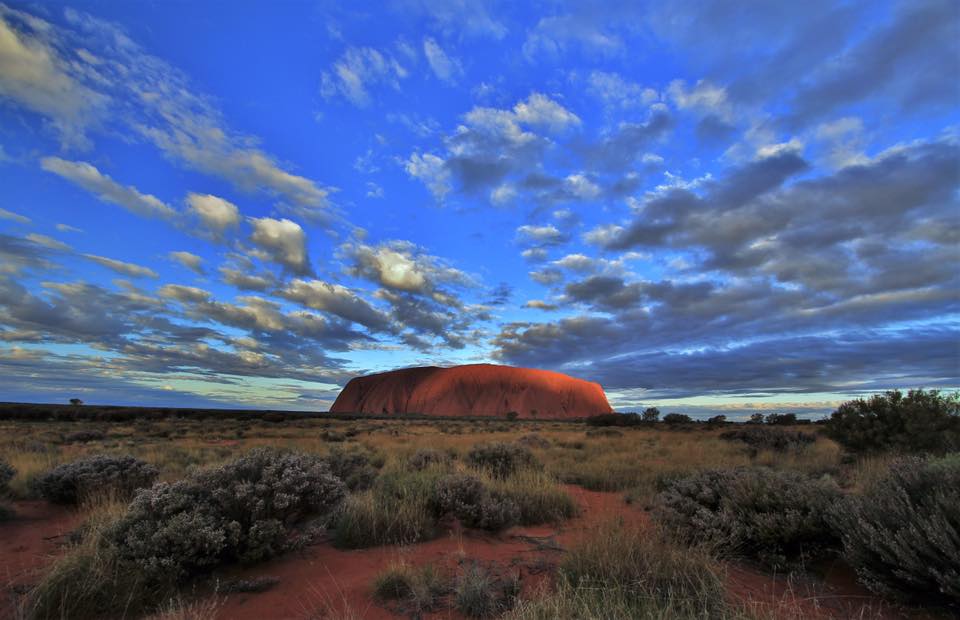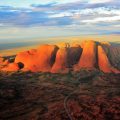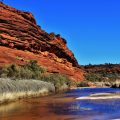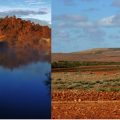Amazing Ayers Rock

Okay – so it’s a rock. A very big rock! And it is absolutely mind-blowing how impressive it is. We’re talking about the iconic Ayers Rock in Central Australia, which rises 348 metres above the desert sand and is 3.6km long and 2.4km wide. The Base Walk is approximately 10km round trip, and well-worth completing in any weather condition.
Ancient Uluru
The area encompassing Ayers Rock is a sacred site to native Aborigines, particularly the Anangu Tribe, and its traditional name is ‘Uluru’. The National Park where Ayers Rock and The Olgas are located is now named Uluru - Kata Tjuta National Park. Once at the bottom of the sea, and thought to be over 600 million years old, the bulk of Uluru is some 2.5km underground!
Getting There
As we left off our last exploration of this beautiful central Australian area at Dalhousie Springs (tip: read ‘Doing Dalhousie’), had a look at Lambert Geographical Centre of Australia, visited the community of Finke which is home to a yearly off road, multi-terrain race for cars, motorbikes and buggies called the Tatts Finke Desert Race. Held during the long weekend in June, the race has the reputation for being held in one of the most remote places in the world – not to mention challenging!
We popped out of the desert onto the Stuart Highway at Kulgera, then headed north to Erldunda before heading west to Yulara which was base camp for our Uluru and Kata Tjuta adventures in the Red Centre. From sunrise to sunset the constantly changing light on and over Uluru makes for magical photography. The pure blue sky and vibrant red rock and sand, are the colours that define Central Australia.
Experiences
There are free indigenous activities and tours, which provide understanding of the connection between local Anangu culture and the desert land. With the many sunset and sunrise viewing platforms and parking areas, you are sure to capture your own unique photo of Uluru, to take home memories of the Outback. Book evening dining experiences, or immerse yourself in the Field of Light display until the end of 2020. Why not splurge and witness the majesty of Kata Tjuta and Uluru from the air? (tip: spend at least three nights and up to a week).
Climbing Uluru
Until October 26, 2019 yes you can climb the rock providing it is not closed due to inclement weather or cultural reasons. The Anangu people ask that visitors respect their culture and law, and don’t climb. There have been many deaths, through falls or heart attacks, so the climb is not for everyone. One rocky, uneven worn path with a small chain link fence is all there is to support you on the climb.
Our lasting impression of the visit to Ayers Rock and the prehistoric Olgas is one of amazement. It truly is a very unique area to explore, and the ever-changing light will allow you to see the rock in all its glory all day long. If you decide to do the Valley of the Winds Walk through the Olgas (Kata Tjuta), then allow 4-5 hours and take necessary supplies. Plan your trip to the Red Centre for May through to August which are the winter months in Australia, and be prepared for warm days and cold nights. This trip is a Bucket List adventure for campers, and we know you’ll have a blast!




